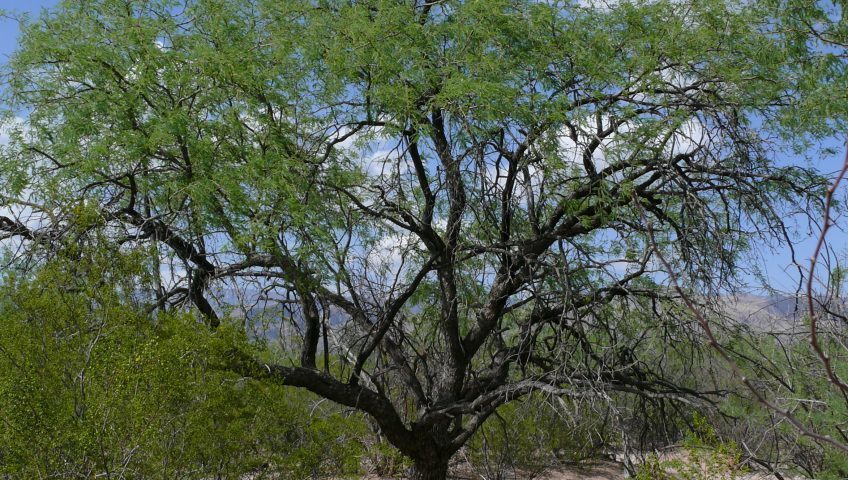

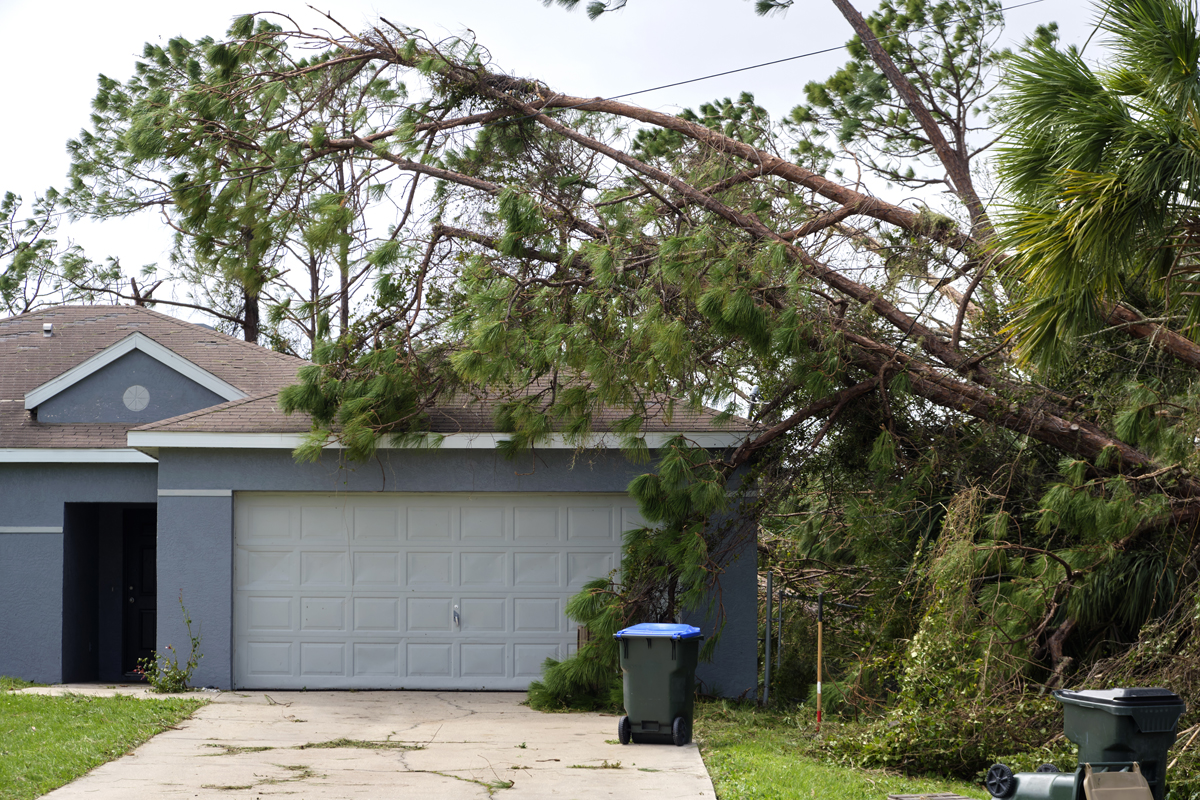
Trees are much treasured in the Phoenix Valley. In part because the desert climate can be harsh on them but also because they help keep properties greener, cooler and more inviting. So it makes sense to plan a tree assessment by a certified arborist. Not only does it ensure you are ahead of the game on minimizing any damage potential from trees on your property, it also is a great safeguard and helps trees stay healthy all year long.
Tree Assessments
A tree assessment is a professional look at how healthy, strong, and safe a tree is. Using techniques that are customary in the field, a licensed arborist looks at the whole tree, from the roots to the canopy, to find early indicators of stress, pests, or structural weakness. This kind of expert study is really important in Phoenix, where trees often have to deal with drought and strong winds. The arborist looks at the tree's leaves, branches, bark, trunk stability, root flare, and the ground around it during an examination. They also look for diseases that are widespread in our area, such sooty canker, root rot, and borers, as well as deterioration, cracks, and insect activity. We also look at things like how much sun the plants get, how often they are watered, and any development that is going on nearby that could hurt the roots.Why People Who Own Homes in Phoenix Should Get Regular Assessments
The arid weather is often hard on trees. Even tough plants like mesquite, palo verde, and ironwood can be dangerous if you don't keep an eye on them. A licensed arborist can find concerns that aren't visible to someone who isn't qualified, like internal deterioration, bad branch attachments, or root problems caused by watering the tree incorrectly. Another big cause for regular inspections is Phoenix's monsoon season. Strong gusts can damage weak branches or knock over trees whose roots aren't strong enough. An arborist can look at the risks and suggest ways to protect your home, cars, and family, such pruning, cabling, or adding structural support.After an Arborist Assessment, You Get:
The report that homeowners obtain is simple and easy to comprehend. It tells them about the tree's status and gives them professional advice. These could include things like fixing the tree's shape, improving the soil, treating diseases, or, in very rare situations, cutting it down. The idea is to keep your trees alive longer, lower dangers, and make your property look its best. An arborist's advice can assist keep valuable mature trees from being damaged by mistake when you are rebuilding or changing the landscape of your property. Their opinion is especially vital for tasks like grading, installing a pool, and building hardscapes.Take care of your investment in your landscape
Trees make your property worth more, give you shade, lower your energy bills, and make the outdoors cooler. A professional arborist can help you keep that investment safe. Phoenix residents may avoid expensive damage, make their trees last longer, and keep their yards safer and healthier by having their trees checked on a regular basis. A professional tree inspection is the ideal place to start if you're worried about a certain tree, getting ready for the rainy season, or just want to feel better. If you are searching for tree service in Scottsdale, Mesa or Tempe, Liberty Tree Experts can help! Get a free tree service quote by giving Liberty a call today at 480-482-9374.More Articles About Arizona Landscaping
- Best Time Of Year To Trim Trees In Arizona
- Can You Grow Lemon Trees In Arizona?
- How To Save A Dying Cactus
- How To Bring A Dead Palm Tree Back To Life
- Cost Of Tree Removal 2020
- How Much Does Cactus Removal Cost?
- How Much Does Palm Tree Trimming Cost?
- How Much Does Palm Tree Removal Cost?
- How Much Does Tree Removal Cost?
- How Much Does Tree Stump Grinding & Removal Cost?
- How To Trim A Tree
- How To Choose a Tree Service
- WHY TOPPING HURTS TREES
- How To Show Your Trees You Love Them
- Fast Growing Trees of Arizona
- When & How to Trim Citrus Trees in Arizona
- Preparing Arizona Trees For Monsoon Storms
- Arizona Ash Trees
- Mesquite Trees In Arizona
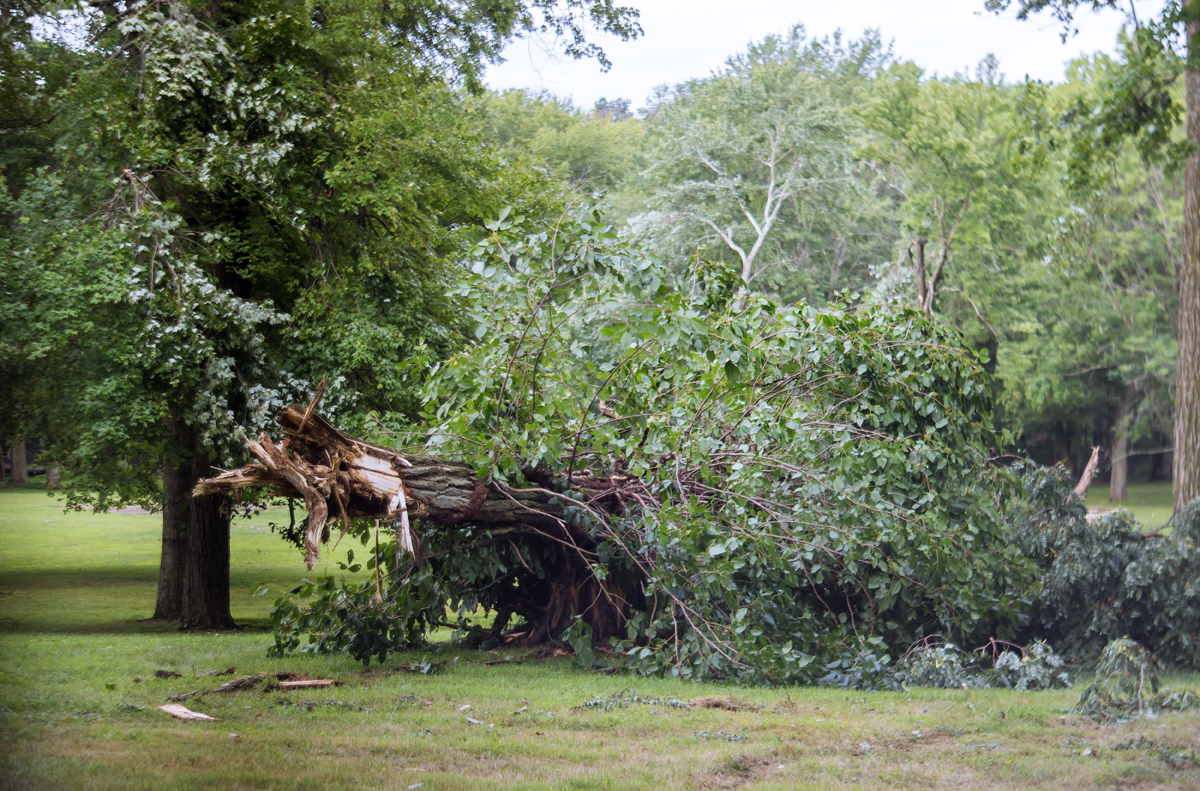

Hey Phoenix neighbors! If you've ever looked up at your trees and thought, “They’re big, they’re beautiful, but maybe they’re a little… out of control,” you’re not alone. At Liberty Tree Experts, we know trees add character, shade, and life to your property, but they also need care, trimming, and the right expertise to thrive safely in Arizona’s desert climate. Here are some of the biggest advantages you’ll get when you hire us for trimming and tree care services around Phoenix.
1. Certified Arborists & Genuine Expertise
One of the first things to look for is whether a tree service has certified arborists. At Liberty Tree Experts in Phoenix, our crews include arborists with strong training. Liberty Tree Experts
It is great that certified arborists know species-specifics needs and how to prune trees in the correct manner so they not only heal correctly but also avoid pests and disease. They also understand how Arizona's sun and monsoon conditions impact the structure of trees. Weak branches are the result of improper trimming and that canlead to delay and even a dangerous collapse. But we know how to get it right, first time!
2. Safety, Accountability & Proper Permits
Cutting big branches, sometimes near power lines or over roofs, is dangerous work. Liberty Tree Experts emphasizes safety and professional standards: climbs done right, safe lowering of cut limbs, trained crews, and the right equipment. Liberty Tree Experts+1
Plus, we’re accredited by the BBB in Arizona—an A+ rating. That shows we adhere to business practices, reliability, and a track record of satisfied customers. Better Business Bureau
3. Holistic Tree Health & Longevity
We don’t just trim trees to make them look nice. There’s a bigger picture: trimming for optimal health, removing dead or diseased branches before they spread issues, thinning out dense canopies so air and sunlight can more easily reach inside, which reduces risk of disease and storm damage. Liberty Tree Experts+1
In phoenix where long periods without rainfall are commonplace, it is not surprising that trees who get regular care hold up better in our climate. Trimming can reduce the chance of branch failure during high winds or monsoons.
4. Aesthetic Appeal & Property Value
Nothing makes a property look well-taken care of than properly well-trimmed trees. Clean looking lines with no limbs looking out of place. It all adds to the curb appeal of your home. Whether you are enjoying your yard or looking for additional value on your house sale, an expert tree trimmer can be a big help!
5. Affordable, Transparent Service with Free Estimates
Nobody likes surprises when it comes time to pay. Liberty Tree Experts offers free estimates so you can see what work is required (pruning, trimming, removal, stump work, etc.), what it will cost, and what you’re getting. Liberty Tree Experts+1
We also strive for fair pricing. Because we serve the entire Phoenix valley (Scottsdale, Tempe, Mesa, Chandler, etc.), we have experience with many local tree types and property situations, which helps us evaluate efficiently and deliver cost-effective trimming. Liberty Tree Experts+1
6. Local Knowledge & Community Commitment
We’re not outsiders who show up once and leave. We are Phoenix area experts. We understand what trees like, what soil, what watering practices, what pruning schedules work in hot, dry weather mixed with monsoon storms. Liberty Tree Experts also emphasizes being part of the community, with strong customer reviews and repeated clients. Liberty Tree Experts+1
When you hire a local arborist, you get someone who drives past your trees daily, who can foresee local pests or climates issues before they become crises, and who cares about their reputation in your neighborhood.
7. Safety from Liabilities & Storm Damage
In Phoenix, summer brings monsoon storms; branches weakened by neglect can fall, damaging property or hurting people. Trimming reduces those risks. Also, managing dead or dying limbs, especially near roofs or power lines, can be critical for avoiding damage (and possibly insurance issues).
Plus, for removing a tree, stump grinding, palm tree removal, and even cactus removal, Liberty Tree Experts covers the full gamut safely. That means one company handling all your tree concerns. Liberty Tree Experts
Conclusion
If you live in Phoenix and your trees are starting to tower, droop, or threaten wires or roofs—or if you just want to keep things looking clean and healthy—trimming services by Liberty Tree Experts are a smart investment. You get certified arborists, safety, good tree health, aesthetic and property value, transparent pricing, and a team that knows Arizona inside and out.
*These are cost estimates. Contact the experienced team at Liberty Tree Experts for more information.Receive A Free Stump Grinding Cost Quote
If you would like to receive a free stump grinding cost quote anywhere in the Phoenix Valley, Liberty Tree Experts can help! We offer affordable stump grinding services in Scottsdale, Phoenix, Chandler, Gilbert, Mesa, Glendale an more. Remove those sick or dead palm trees from your residential yard or commercial property.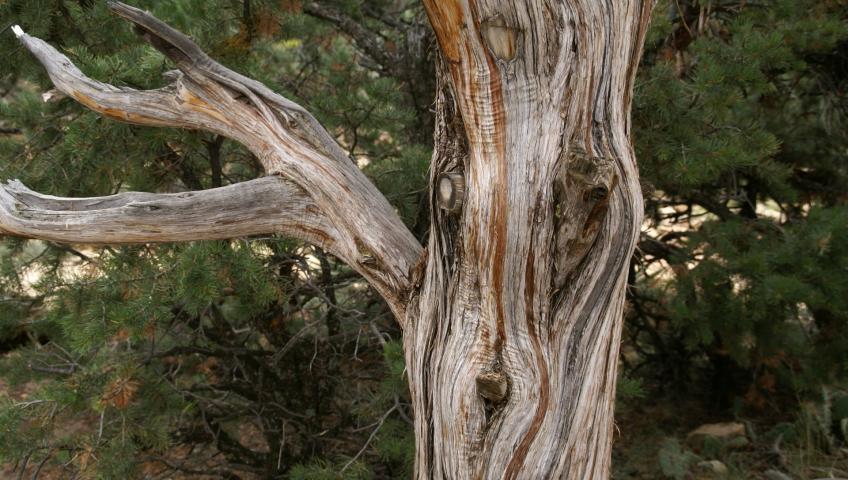


When cutting down a tree, safety and technique are everything. Many accidents happen because of simple mistakes. Here’s a list of things you absolutely should NOT do when felling a tree:
🚫 DON’T Do These When Cutting Down a Tree
1. ❌ Don’t Skip Safety Gear
-
ALWAYS wear a helmet, eye protection, ear protection, gloves, chainsaw chaps, and steel-toe boots.
-
A falling branch (called a "widowmaker") can be deadly.
2. ❌ Don’t Cut Alone
-
Always have someone nearby to assist or call for help in case of emergency.
-
Let someone know where you are and what you’re doing.
3. ❌ Don’t Use a Dull Chainsaw
-
A dull saw increases the chance of kickback and puts you at higher risk of losing control.
-
Keep your saw sharp and well-maintained.
4. ❌ Don’t Forget to Plan the Fall Direction
-
Know which way you want the tree to fall and clear that area.
-
Remove anything that might be damaged (cars, fences, power lines, etc.).
5. ❌ Don’t Stand in the Wrong Spot
-
Never stand directly behind or in front of the tree when it begins to fall.
-
Move at a 45° angle away from the fall path, and stay alert.
6. ❌ Don’t Ignore the Tree’s Lean or Dead Branches
-
If the tree is leaning, it may fall in that direction regardless of your cuts.
-
Look for dead limbs or weak spots—these may fall unexpectedly.
7. ❌ Don’t Make Only One Cut
-
Don’t try to chop through the tree with one horizontal cut.
-
Use the proper notch and back cut method:
-
Create a notch (face cut) on the fall side (usually 70°/20% deep).
-
Then make a back cut slightly above the notch on the opposite side.
-
8. ❌ Don’t Forget to Check for Obstructions
-
Power lines, structures, vehicles, fences—clear everything in the fall zone.
-
Trees near buildings or power lines should be handled by pros.
9. ❌ Don’t Cut in High Winds or Bad Weather
-
Wet or windy conditions can cause the tree to fall unpredictably.
-
Wait for calm, dry weather.
10. ❌ Don’t Attempt Large Trees Without Experience
-
Trees taller than 20 feet or near hazards (like power lines) should be handled by certified arborists or tree removal professionals.
✅ Bonus Tip: Inspect the Tree First
-
Check for:
-
Hollow trunks
-
Cracks
-
Rot or fungus at the base
-
Bee/wasp nests or wildlife
-
🌲 Step-by-Step Tree Felling Guide
✅ Before You Begin: Prep & Safety
-
Wear full safety gear
-
Helmet, eye/ear protection, gloves, steel-toe boots, chainsaw chaps
-
-
Inspect the tree
-
Look for lean, rot, cracks, dead branches, or wildlife nests
-
Identify hazards (power lines, structures, vehicles)
-
-
Clear the area
-
Remove debris around the tree base
-
Ensure you have a clear escape path and fall zone (twice the tree height)
-
✂️ Step 1: Plan the Fall Direction
-
Decide where you want the tree to fall (usually in the direction it naturally leans)
-
Clear at least 2 escape paths at 45° angles behind you and away from the fall line
✏️ Step 2: Make the Notch Cut (Face Cut)
This tells the tree where to fall.
-
Side facing fall direction
-
Make 2 cuts:
-
Top cut: Angle downward at 70°
-
Bottom cut: Horizontal to meet the top cut
-
-
The notch should be about 20–25% into the tree's diameter
🪓 Step 3: Make the Back Cut
This releases the tree to fall.
-
Go to the opposite side of the notch
-
Make a horizontal cut slightly above the bottom of the notch
-
DO NOT CUT ALL THE WAY THROUGH — leave a "hinge" of wood (about 10% of the tree's diameter) to control the fall
🏃 Step 4: Retreat Immediately
-
As the tree begins to fall:
-
Shut off or drop the saw safely
-
Retreat along one of the 45° escape paths
-
Keep your eyes on the tree as you move
-
⚠️ Step 5: After the Fall
-
Wait for all motion to stop before approaching the tree
-
Be cautious of:
-
Tensioned limbs or branches
-
“Barber chairing” (a tree splitting vertically due to improper cuts)
-
🧰 Pro Tips:
-
Use wedges to prevent the tree from leaning back and pinching the saw
-
For large, heavy, or leaning trees — hire a professional arborist
More Articles About Arizona Landscaping
- Best Time Of Year To Trim Trees In Arizona
- Can You Grow Lemon Trees In Arizona?
- How To Save A Dying Cactus
- How To Bring A Dead Palm Tree Back To Life
- Cost Of Tree Removal 2020
- How Much Does Cactus Removal Cost?
- How Much Does Palm Tree Trimming Cost?
- How Much Does Palm Tree Removal Cost?
- How Much Does Tree Removal Cost?
- How Much Does Tree Stump Grinding & Removal Cost?
- How To Trim A Tree
- How To Choose a Tree Service
- WHY TOPPING HURTS TREES
- How To Show Your Trees You Love Them
- Fast Growing Trees of Arizona
- When & How to Trim Citrus Trees in Arizona
- Preparing Arizona Trees For Monsoon Storms
- Arizona Ash Trees
- Mesquite Trees In Arizona
In Arizona, the cost of trimming a mesquite tree in 2025 varies based on factors like tree size, condition, and location. Here's a breakdown to guide your budgeting:
💰 Estimated Mesquite Tree Trimming Costs in Arizona (2025)
-
Small Trees (under 15 feet): $100 – $240
-
Medium Trees (15–25 feet): $275 – $475
-
Large Trees (25+ feet): $600 – $800
These estimates can vary depending on the specific region in Arizona and the complexity of the trimming required.
🛠️ Factors Influencing Trimming Costs
-
Tree Size & Height: Larger trees require more labor and equipment.
-
Tree Condition: Overgrown or diseased trees may need more extensive work.
-
Accessibility: Trees near structures or power lines can increase costs due to the need for specialized equipment or safety measures.
-
Service Provider Rates: Prices can vary between companies and regions within Arizona.
📍 Regional Cost Variations
-
Phoenix Area: Average costs range from $386 to $574 per tree, depending on size and complexity.
-
Scottsdale: Small tree trimming costs around $100–$240.
-
Tucson: Costs are comparable to other regions, but it's advisable to get local estimates for accuracy.
📅 Optimal Trimming Time
The best time to trim mesquite trees is in late winter or early spring, before new growth begins. This timing helps maintain tree health and reduces stress.
Tips for Hiring a Tree Trimming Service
Here are some key tips for hiring a reliable and qualified tree trimming service:
✅ 1. Verify Licensing and Insurance
-
Make sure the company is licensed to operate in your state.
-
Ask for proof of liability insurance and workers’ compensation—this protects you if damage or injury occurs on your property.
✅ 2. Check Credentials and Experience
-
Look for companies with certified arborists (ISA-certified preferred).
-
Ask how long they've been in business and if they have experience specifically with mesquite or desert trees.
✅ 3. Ask for References or Reviews
-
Check platforms like Google, Yelp, or Better Business Bureau.
-
Request references from previous customers, especially for similar jobs.
✅ 4. Get Multiple Quotes
-
Obtain at least 2–3 estimates to compare prices and services offered.
-
Be wary of unusually low quotes—they may cut corners or lack proper coverage.
✅ 5. Clarify Services Included
-
Make sure the quote includes:
-
Debris removal
-
Hauling or chipping
-
Disposal fees
-
-
Ask if there's an extra charge for emergency work or difficult access.
✅ 6. Avoid Topping or Over-Pruning
-
A reputable arborist will avoid harmful practices like "topping," which can damage or kill the tree.
-
Ask about their pruning methods to ensure they follow proper tree health standards.
✅ 7. Get It in Writing
-
Always get a written estimate or contract that includes:
-
Scope of work
-
Estimated timeline
-
Total cost
-
Cleanup details
-
Any warranties or guarantees
-
✅ 8. Ask About Equipment and Safety Practices
-
Ensure they use well-maintained equipment and follow OSHA safety standards.
-
For large or risky jobs, confirm that crew members use harnesses, helmets, and safety lines.
Liberty Tree Care Offers Tree Services in Scottsdale, Mesa & Tempe
If you are searching for tree service in Scottsdale, Mesa or Tempe, Liberty Tree Experts can help! Get a free tree service quote by giving Liberty a call today at 480-482-9374.
 Below, we have outlined 7 things you should never do when cutting a tree.
Below, we have outlined 7 things you should never do when cutting a tree.
1. Never Cut A Tree Down By Yourself
You will undoubtedly need a helper or two when attempting to cut down a tree. Working on this task with multiple people will help to make the job easier and safer, overall. Each person involved in the process can handle a different role. For instance, one person can cut through the trunk while another person can trim the branches.2. Do Not Use A Chainsaw Without Experience
Do not even attempt to cut a tree if you do not have any prior experience using a chainsaw. Chainsaws are powerful tools that can be very dangerous when used by inexperienced individuals.3. Do Not Top The Tree
Topping the tree can ultimately destroy its stability and natural shape. This will make the tree more susceptible to high winds and stormy conditions. Leave the tree pruning to the professionals at all times.4. Do Not Cut Branches That Are Bigger Than Your Arms
Do not attempt to cut any branches that are bigger than your arms. Doing so could result in serious injuries. Large branches are quite difficult to handle and can possibly damage the surrounding areas.5. Do Not Stand Under The Tree While It Is Being Cut
Ensure that nobody is standing beneath the tree while it is being cut down. Stand either to the side or walk away from the tree entire to ensure safety. Always be mindful of everyone's location when cutting down a tree.6. Refrain From Cutting The Tree Trunk Too Close To The Ground
When the tree's trunk is cut very close to the ground, significant damage can be done. Implement the 25% rule where the roots should never be cut beyond 25% of the total volume of the tree. It can be quite dangerous when a tree is cut too close to the ground. The tree's weight can be too much, resulting in damage to the surrounding area.7. Never Leave The Stump In The Ground
Always remove the entire stump in order to avoid any rot and decay. This will help keep your property clean and in the best shape possible.Liberty Tree Care Offers Tree Services in Scottsdale, Mesa & Tempe
If you are searching for tree service in Scottsdale, Mesa or Tempe, Liberty Tree Experts can help! Get a free tree service quote by giving Liberty a call today at 480-482-9374.More Articles About Arizona Landscaping
- Best Time Of Year To Trim Trees In Arizona
- Can You Grow Lemon Trees In Arizona?
- How To Save A Dying Cactus
- How To Bring A Dead Palm Tree Back To Life
- Cost Of Tree Removal 2020
- How Much Does Cactus Removal Cost?
- How Much Does Palm Tree Trimming Cost?
- How Much Does Palm Tree Removal Cost?
- How Much Does Tree Removal Cost?
- How Much Does Tree Stump Grinding & Removal Cost?
- How To Trim A Tree
- How To Choose a Tree Service
- WHY TOPPING HURTS TREES
- How To Show Your Trees You Love Them
- Fast Growing Trees of Arizona
- When & How to Trim Citrus Trees in Arizona
- Preparing Arizona Trees For Monsoon Storms
- Arizona Ash Trees
- Mesquite Trees In Arizona
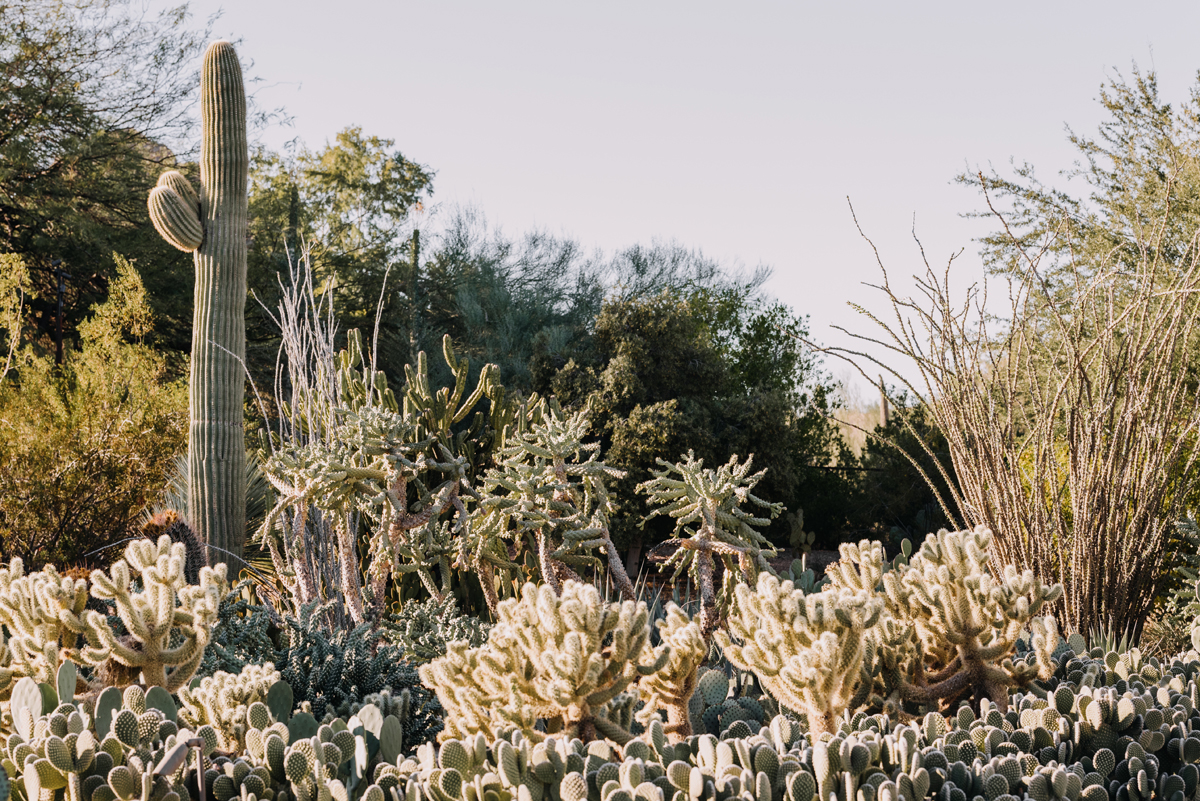
 Gardeners and landscapers across the state of Arizona depend on low-maintenance plants that can thrive with very little care. If you are looking for the best low-maintenance plants under the Arizona sun, we've highlighted some of our favorites below.
Gardeners and landscapers across the state of Arizona depend on low-maintenance plants that can thrive with very little care. If you are looking for the best low-maintenance plants under the Arizona sun, we've highlighted some of our favorites below.
Dalea
These are a diverse group of plants that can survive and thrive the extreme Arizona summers. There are nearly 200 Dalea species, which includes both trees and shrubs. The pea-shaped flowers can come in three different colors, including yellow, purple and rose.Sugar Bush Rhus Ovata
Growing to an average of 3-4-feet tall, the Rhus Ovata features green leaves with a hint of red around the edges. During the fall seasons, the leaves will turn a beautiful shade of red/orange. At this time, the plant will also produce small yellow flowers.Little Leaf Cordia Cordia Parvifolia
This small and shrubby tree can grow as high as 6-feet tall. It features a broad, rounded canopy that will bloom white flowers during the spring. The bark is typically brown colored, with small and pointed leaves.Feathery Cassia Cassia Nemophila
This is an evergreen shrub that grows rather quickly. This plant loves when direct sunlight touches its needle-like leaves. This shrub can also flower, growing round yellow clusters near the ends of the branches.Eremophila
Straight from the semi-arid to arid regions of Australia, this is considered a group of evergreen plants. The emu bushes grow in several different soil types, with the ability to survive for long periods of time without water.Chihuahuan Sage Leucophyllum Laevigatum
This low-maintenance plant can thrive in the extreme Arizona climate. This features small leaves, producing lots of purple flowers over time. These shrubs can grow as high as 4 feet and as wide as 5 feet.Liberty Tree Care Offers Tree Services in Scottsdale, Mesa & Tempe
If you are searching for tree service in Scottsdale, Mesa or Tempe, Liberty Tree Experts can help! Get a free tree service quote by giving Liberty a call today at 480-482-9374.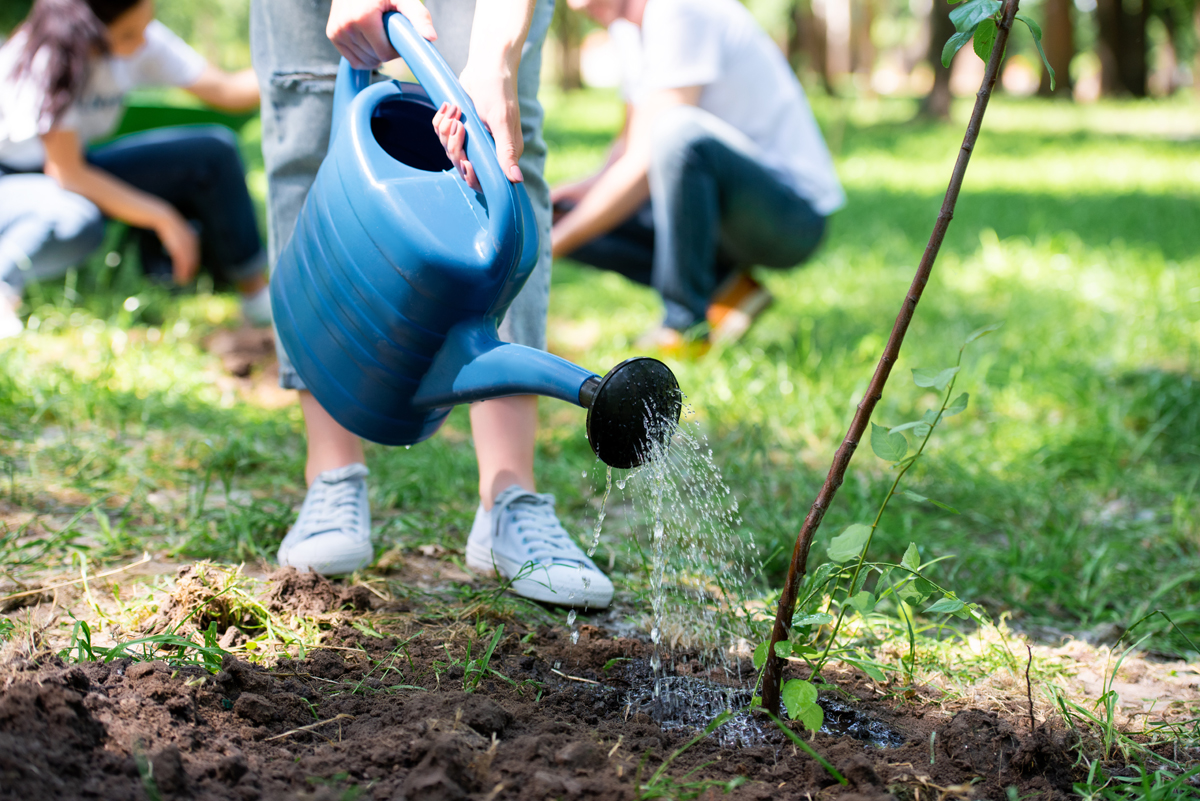
 Watering trees in Arizona's arid climate requires careful attention to ensure their health and longevity. Here are some practical tips:
Watering trees in Arizona's arid climate requires careful attention to ensure their health and longevity. Here are some practical tips:
1. Understand Tree Watering Needs
- Young Trees: Newly planted trees need more frequent watering (every 2-3 days initially, tapering to once a week after a few months).
- Established Trees: Mature trees can thrive with deep watering every 2-4 weeks, depending on the season.
2. Water Deeply and Infrequently
- Focus on deep watering to encourage deep root growth. Water should penetrate 2-3 feet into the soil, which is where most tree roots grow.
- Avoid shallow, frequent watering, as it promotes surface roots that are more vulnerable to heat and drought.
3. Water at the Drip Line
- The “drip line” is the outer edge of the tree canopy. Water here rather than near the trunk to target the area where feeder roots absorb water most effectively.
4. Water Early in the Morning or Late Evening
- Watering during cooler times of the day reduces evaporation and ensures more water reaches the roots.
5. Adjust for Seasons
- Summer (May–September): Water more frequently, but still deeply.
- Winter (October–April): Reduce watering frequency, as trees are less active during cooler months.
6. Monitor Soil Moisture
- Check soil moisture 12-24 inches deep using a soil probe or screwdriver. If it’s dry at that depth, it’s time to water.
7. Use Mulch
- Apply a 2-4 inch layer of mulch around the base of the tree (but not touching the trunk) to retain soil moisture and reduce temperature fluctuations.
8. Use Efficient Irrigation Methods
- Drip irrigation or soaker hoses are ideal for slow, deep watering.
- If using a garden hose, let it run slowly to ensure deep penetration without runoff.
9. Choose Native or Drought-Resistant Trees
- Native or desert-adapted trees like Palo Verde, Mesquite, or Ironwood require less water once established.
10. Look for Signs of Overwatering or Underwatering
- Overwatering: Yellowing leaves, standing water, or soggy soil.
- Underwatering: Wilting, browning leaves, or dry, cracked soil.
